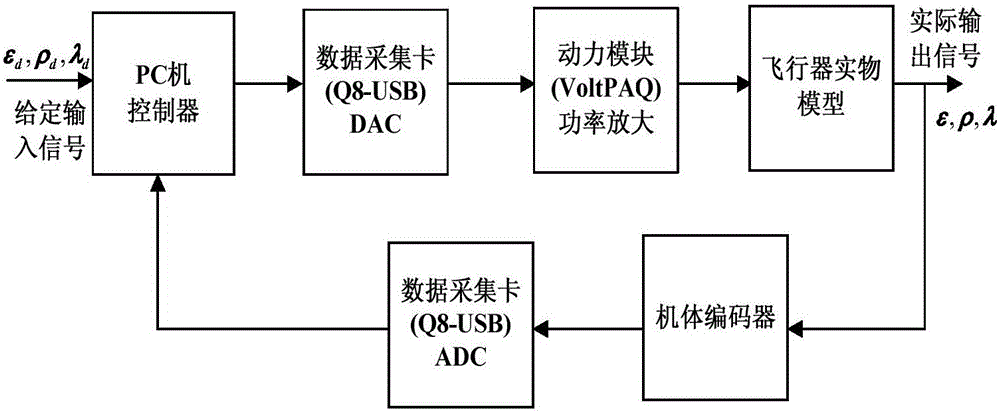Active disturbance rejection control method for 3-DOF (Degree Of Freedom) helicopter attitude
A technology of ADRC and helicopter, applied in the field of aircraft control
- Summary
- Abstract
- Description
- Claims
- Application Information
AI Technical Summary
Problems solved by technology
Method used
Image
Examples
Embodiment 1
[0133] To stabilize the system, select the initial attitude angle of the three-degree-of-freedom helicopter [ε 0 ρ 0 lambda 0 ] T =[20°100° -10°] T , the ideal value of the attitude angle is set to the amplitude of 0°, and the simulation experiment time is 60s.
[0134] The attitude tracking result of the final system and the output of the tracking differentiator are as follows: Figure 5 to Figure 7 shown.
[0135] Figure 5 to Figure 7 It shows that the tilt angle, pitch angle and travel angle can track the given attitude signal quickly and accurately, and the extended state observer can effectively observe the attitude angle. In the process of attitude tracking, the system can take into account both steady-state performance and dynamic performance.
Embodiment 2
[0137] To test the step response of the system, select the initial attitude angle of the three-degree-of-freedom helicopter [ε 0 ρ 0 lambda 0 ] T =[0° 0°0°] T ,
[0138] The ideal value of the attitude angle is set to the amplitude of 30°, and the simulation experiment time is 60s.
[0139] The attitude tracking result of the final system and the output of the tracking differentiator are as follows: Figure 8 to Figure 10 shown.
[0140] Figure 8 to Figure 10 It shows that the tilt angle, pitch angle and travel angle can track the given attitude signal quickly and accurately, and the extended state observer can effectively observe the attitude angle. In the process of attitude tracking, the system can take into account both steady-state performance and dynamic performance.
Embodiment 3
[0142] To test the square wave response of the system, select the initial attitude angle of the three-degree-of-freedom helicopter [ε 0 ρ 0 lambda 0 ] T =[0° 90°-10°] T ,
[0143] Set the square wave input amplitude of the tilt angle channel to 90° and the frequency to 0.04Hz; the square wave input amplitude of the travel angle channel to 30° and the frequency to 0.04Hz, and the simulation experiment time is 60s.
[0144] The attitude tracking result of the final system and the output of the tracking differentiator are as follows: Figure 11 to Figure 13 shown.
[0145] Figure 11 to Figure 13 It shows that the tilt angle, pitch angle and travel angle can track the given attitude signal quickly and accurately, and the extended state observer can effectively observe the attitude angle. In the process of attitude tracking, the system can take into account both steady-state performance and dynamic performance.
PUM
 Login to View More
Login to View More Abstract
Description
Claims
Application Information
 Login to View More
Login to View More - R&D
- Intellectual Property
- Life Sciences
- Materials
- Tech Scout
- Unparalleled Data Quality
- Higher Quality Content
- 60% Fewer Hallucinations
Browse by: Latest US Patents, China's latest patents, Technical Efficacy Thesaurus, Application Domain, Technology Topic, Popular Technical Reports.
© 2025 PatSnap. All rights reserved.Legal|Privacy policy|Modern Slavery Act Transparency Statement|Sitemap|About US| Contact US: help@patsnap.com



